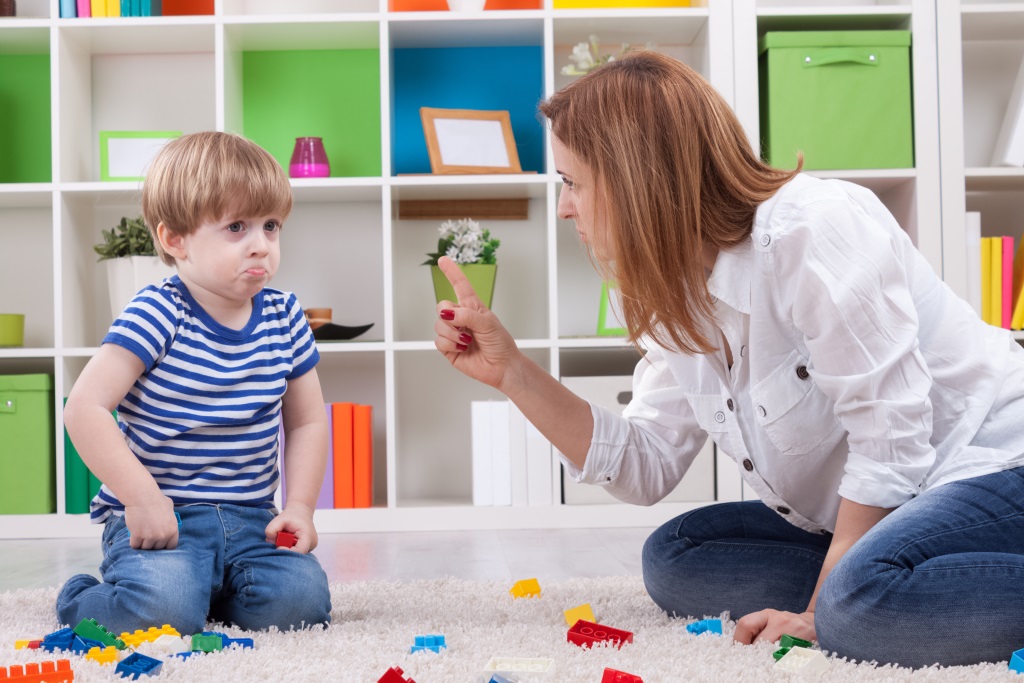Chapter 5. How Would You Know If Having Children Relates to Being Happier?
5.1


By:
C. Nathan DeWall, University of Kentucky
David G. Myers, Hope College
5.2
Note: You will be guided through the Intro, Design, Measure, Interpret, Conclusion, and Quiz sections of this activity. You can see your progress highlighted in the non-clickable, navigational list at right.
Watch this video from your author, Nathan DeWall, for a helpful, very brief overview of the activity.
5.3

So, how would you know if having children relates to being happier? To study this question effectively in your role as researcher, you need to DESIGN an appropriate study that will lead to meaningful results, MEASURE happiness levels in your participants, and INTERPRET the larger meaning of your results, considering how your findings would apply to the population as a whole.
We will start by choosing the best research DESIGN. Select the design your study should use to find out if having children relates to higher happiness levels.
| A. |
| B. |
| C. |
Click on "Video Hint" below to see brief animations describing Case Studies, Correlational Studies, and Experiments.
Video Hint
5.4
Case Studies:
Correlational Studies:
Experiment:
5.5

You have chosen the Case Study design. Next you need to select the participant(s) for your Case Study. With a Case Study design, you will choose one person or a small group of people, such as a specific school or family, and then study them in depth.
Who would be the best person or persons for your study?
| A. |
| B. |
| C. |
| D. |
5.6

What could we learn from these participant choices?
a happy new parent Just because one new parent is happy does not mean all new parents are happy. Studying just one happy parent would not give us results that we could apply to a larger population of parents.
a depressed new parent Just because one new parent is depressed does not mean all new parents are depressed. Studying just one depressed parent would not give us results that we could apply to a larger population of parents.
a group therapy class for new parents This participant sample would not be representative of parents in general, because only a small subgroup of new parents seeks group therapy.
Trying to choose a sample of participants helps us realize that the CASE STUDY IS NOT THE BEST RESEARCH DESIGN to test this question. We’d get more helpful results by studying large, representative groups of people, so that we can determine how many of those with children are happier than those without children.
Click ‘next’ to go back and try again to select the most effective research design.
5.7

What could we learn from these participant choices?
a happy new parent Just because one new parent is happy does not mean all new parents are happy. Studying just one happy parent would not give us results that we could apply to a larger population of parents.
a depressed new parent Just because one new parent is depressed does not mean all new parents are depressed. Studying just one depressed parent would not give us results that we could apply to a larger population of parents.
a group therapy class for new parents This participant sample would not be representative of parents in general, because only a small subgroup of new parents seeks group therapy.
Trying to choose a sample of participants helps us realize that the CASE STUDY IS NOT THE BEST RESEARCH DESIGN to test this question. We’d get more helpful results by studying large, representative groups of people, so that we can determine how many of those with children are happier than those without children.
Click ‘next’ to go back and try again to select the most effective research design.
5.8

What could we learn from these participant choices?
a happy new parent Just because one new parent is happy does not mean all new parents are happy. Studying just one happy parent would not give us results that we could apply to a larger population of parents.
a depressed new parent Just because one new parent is depressed does not mean all new parents are depressed. Studying just one depressed parent would not give us results that we could apply to a larger population of parents.
a group therapy class for new parents This participant sample would not be representative of parents in general, because only a small subgroup of new parents seeks group therapy.
Trying to choose a sample of participants helps us realize that the CASE STUDY IS NOT THE BEST RESEARCH DESIGN to test this question. We’d get more helpful results by studying large, representative groups of people, so that we can determine how many of those with children are happier than those without children.
Click ‘next’ to go back and try again to select the most effective research design.
5.9

What could we learn from these participant choices?
a happy new parent Just because one new parent is happy does not mean all new parents are happy. Studying just one happy parent would not give us results that we could apply to a larger population of parents.
a depressed new parent Just because one new parent is depressed does not mean all new parents are depressed. Studying just one depressed parent would not give us results that we could apply to a larger population of parents.
a group therapy class for new parents This participant sample would not be representative of parents in general, because only a small subgroup of new parents seeks group therapy.
Trying to choose a sample of participants helps us realize that the CASE STUDY IS NOT THE BEST RESEARCH DESIGN to test this question. We’d get more helpful results by studying large, representative groups of people, so that we can determine how many of those with children are happier than those without children.
Click ‘next’ to go back and try again to select the most effective research design.
5.10

Nice work! You have correctly chosen to use a Correlational design for your study.
Next, you need to choose large groups to compare on various measures.
Which of the following represents the best groups to compare?
| A. |
| B. |
| C. |
5.11

You need to study results from both parents and non-parents in order to determine if having children relates to happiness. Click ‘next’ to go back and try again to choose effective groups to compare.
5.12

You need to study results from both parents and non-parents in order to determine if having children relates to happiness. Click ‘next’ to go back and try again to choose effective groups to compare.
5.13
You have chosen Experimental design, which means you need to set up an experimental group and a control group. For example, when testing a psychiatric drug, researchers will give the drug to their experimental group and then give a placebo pill to their control group. This allows researchers to compare the effects of simply taking a pill with the actual effects of the drug.

Describe below how you would set up your experimental and control groups to determine if having children relates to being happier:
5.14

This is tricky, isn’t it? To use the Experimental design, we would need to have an experimental group of couples assigned to have children, and a control group of couples assigned to not have children, so that we could later compare their happiness levels.
It is not ethical to make such assignments—you can’t randomly assign people to have children or not have children. We would also have a lot of trouble recruiting participants!
For more on Research Ethics, click on “Video Hint” below.
Video Hint
So, EXPERIMENTAL IS NOT THE BEST RESEARCH DESIGN for this study. We’d get more helpful results by studying large, representative groups of people, so that we can determine how many of those with children are happier than those without children.
Click ‘next’ to go back and try again to select the most effective research design.
5.15
Research Ethics:
5.16


Good job! You have correctly chosen to use a Correlational Design, and you’ve selected appropriate groups to compare—a representative sample of parents and non-parents.Now you need to determine how best to MEASURE the relevant behavior or mental process, which in this case is happiness levels.
Select the measurement option below that you think would work best.
| A. |
| B. |
| C. |
5.17

You chose Ask your participants this question: “When you complete activities with your children, would you say you are very happy, quite happy, not very happy, or not at all happy?”, but that is NOT CORRECT.
Measuring your participants’ happiness levels only when they are with their children would not give us information about their overall happiness levels. Also, your participants will not all be parents, so some of them will not be able to answer the question.
Click ‘next’ to try again to select the best way to measure happiness.
5.18

You chose Have your study participants “Draw a picture of a happy person." Use the degree of happiness in the drawn person to measure the participant's unconscious happiness level, but that is NOT CORRECT.
It would be difficult to measure objectively the degree of happiness shown in a person’s drawing. There are better, more direct ways to measure happiness.
Click ‘next’ to try again to select the best way to measure happiness.
5.19

Good work! You've now correctly chosen to use a Correlational design, and you’ve selected appropriate groups to compare—a representative sample of parents and non-parents. You’ve also chosen an effective way to measure happiness—you will ask your participants this question: “Taking all things together, would you say you are very happy, quite happy, not very happy, or not at all happy?”
Next you need to consider how you can apply what you’ve learned to the larger population—beyond the groups of people you’ve studied. Consider where you might encounter roadblocks to confidence in your results. What factors might keep you from being able to apply what you’ve learned in a broader context?
5.20


You are interested in knowing how parenthood is related to happiness levels. There are other factors that may be related to happiness levels in the people you’ve studied. These factors that could potentially interfere with our INTERPRETATION of results are called confounding variables.
Select all of the factors that could be related to your participants’ happiness levels and thus interfere with your study’s interpretation of results:
| Marital status | |
| Favorite color | |
| Preference for coffee or tea | |
| Age | |
| Socioeconomic status | |
| Number of Miley Cyrus songs memorized |
Click on "Video Hint" below to see a brief animation describing Confounding Variables.
Video Hint
5.21
Confounding Variable:
5.22

The confounding variables for your study would include those highlighted below:
| Marital status | |
| Favorite color | |
| Preference for coffee or tea | |
| Age | |
| Socioeconomic status | |
| Number of Miley Cyrus songs memorized |
In fact, actual research has shown that HAVING CHILDREN DOES RELATE TO BEING HAPPIER, but happiness levels are greatest for those who are (1) at a certain income bracket (at least enough to live comfortably), (2) of a certain age (not teenage parents), and (3) in stable relationships (rather than being single).
5.23
You may do better on the Quiz if you take notes while watching this video. Feel free to pause the video or re-watch it as often as you like.
REFERENCES
Blanchflower, D. G., & Oswald, A. J. (2004). Well-being over time in Britain and the USA. Journal of Public Economics, 88, 1359–1386.
Cunningham, A. M., & Knoester, C. (2007). Marital Status, Gender, and Parents’ Psychological Well‐Being*. Sociological Inquiry, 77, 264-287.
Deaton, A., & Stone, A. A. (2013). Evaluative and hedonic wellbeing among those with and without children at home. Proceedings of the National Academy of Science, 111, 1328-1333.
Eibach, R. & Mock, S. (2011). Idealizing parenthood to rationalize parental investments. Psychological Science, 22, 203–208.
Glenn, N. D., & Weaver, C. N. (1979). A note on family situation and global happiness. Social Forces, 960–967.
Kahneman, D., et al. (2004). Toward national well-being accounts. American Economic Review, 429–434.
Nelson, S., et al. (2013). In defense of parenthood: Children are associated with more joy than misery. Psychological Science, 24, 3–10.
Ross, C. E., & Van Willigen, M. (1996). Gender, parenthood, and anger. Journal of Marriage and the Family, 572–584.
5.24
QUIZ: NOW WHAT DO YOU KNOW?
1. Which of the following statements is TRUE?
| A. |
| B. |
| C. |
| D. |
2. In your study, socioeconomic status was a confounding variable because:
| A. |
| B. |
| C. |
| D. |
3. Why was it good to account for confounding variables in your study?
| A. |
| B. |
| C. |
| D. |
4. Studies similar to the one you set up have shown that having children is related to higher levels of happiness. These studies have also shown that:
| A. |
| B. |
| C. |
| D. |
5. What factors should couples consider when asking if having children could increase their happiness? (5 points)